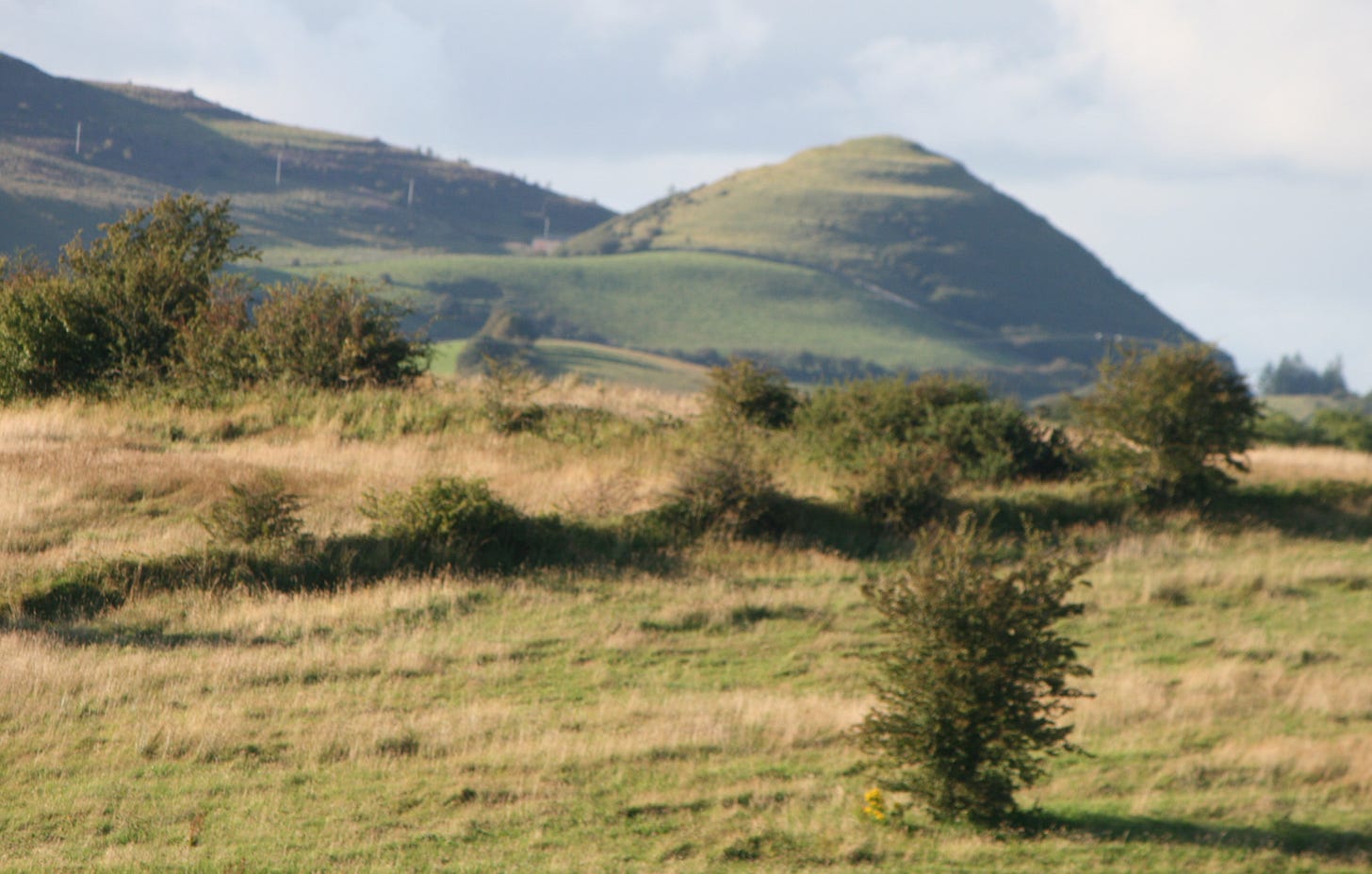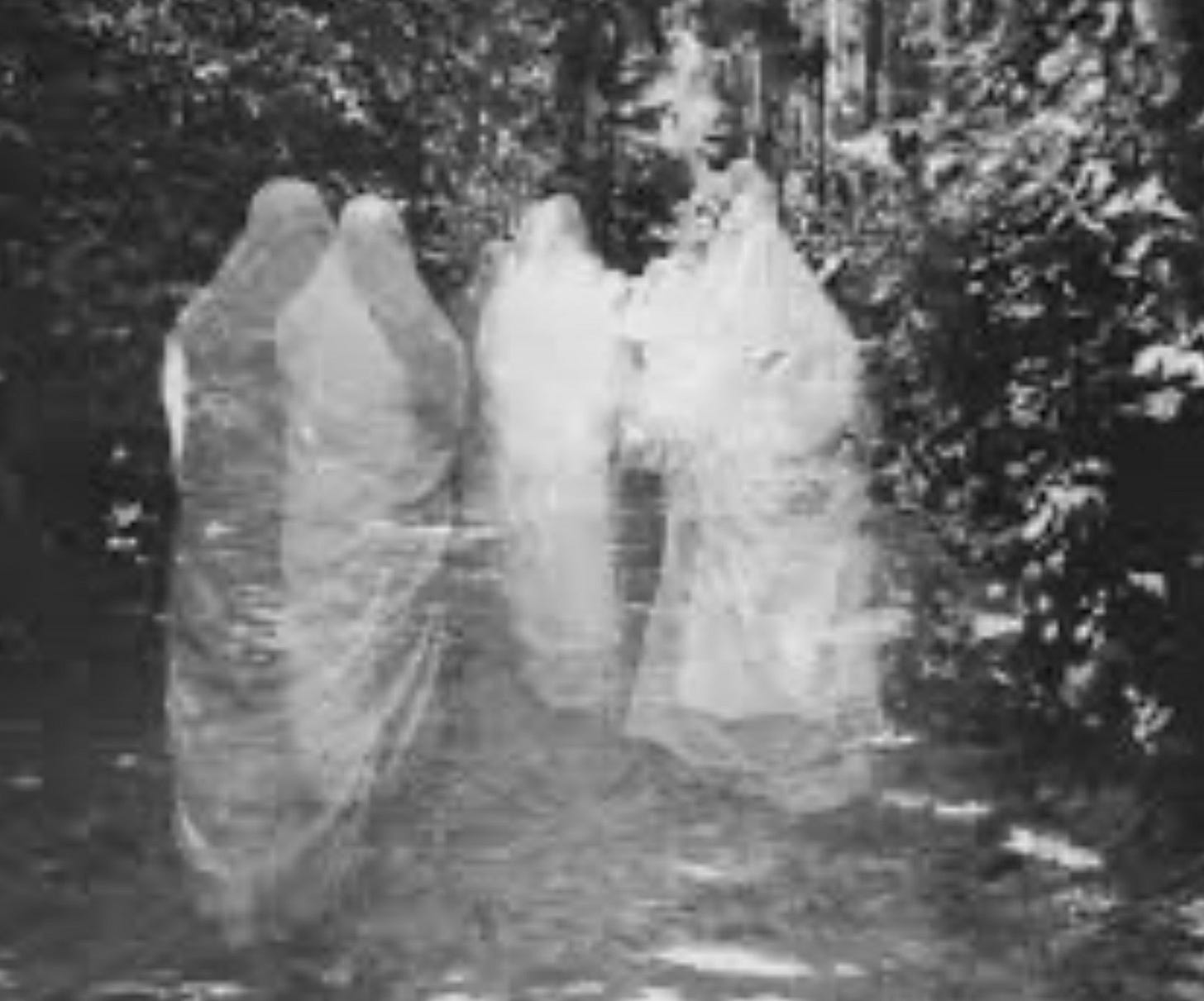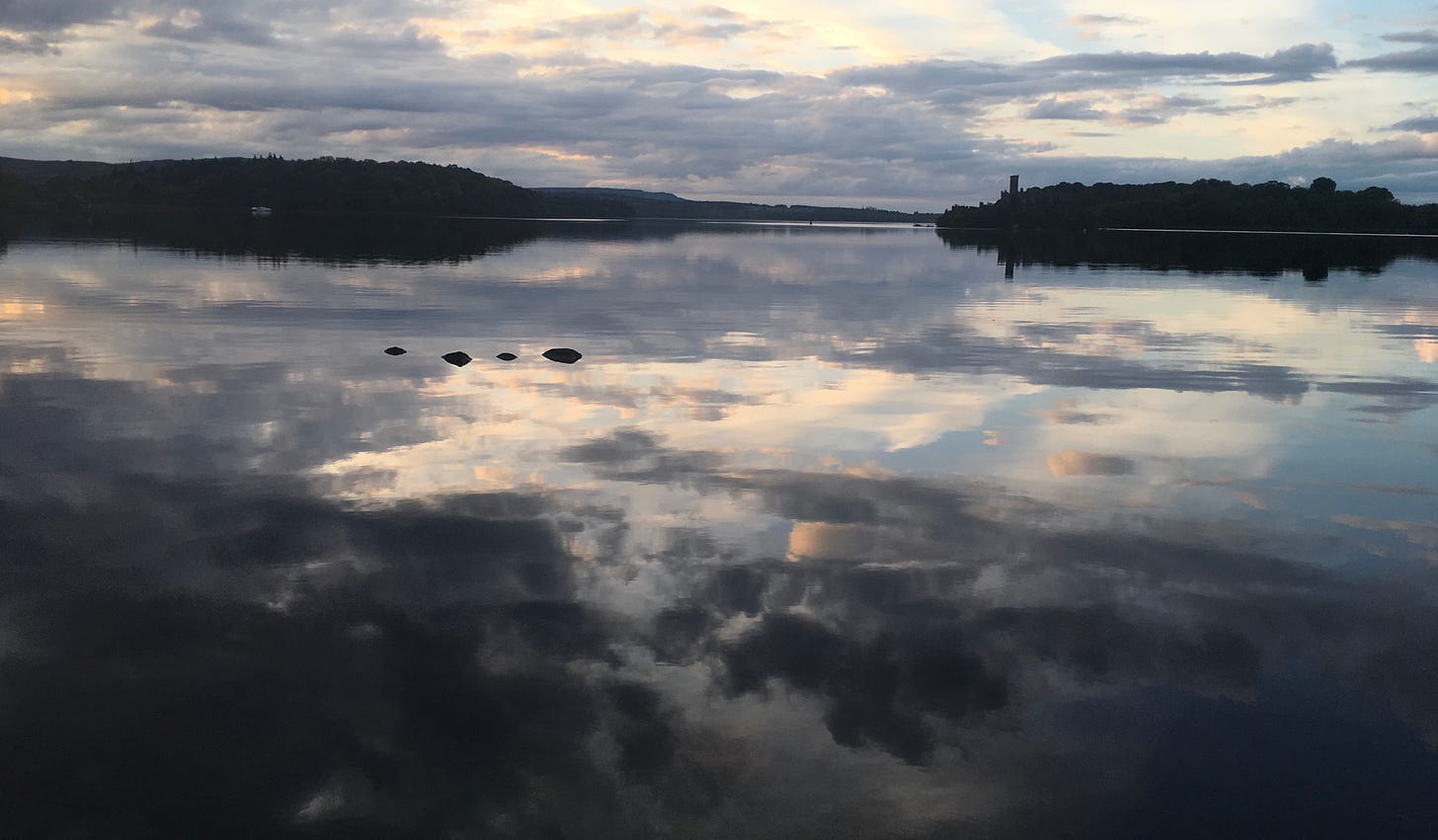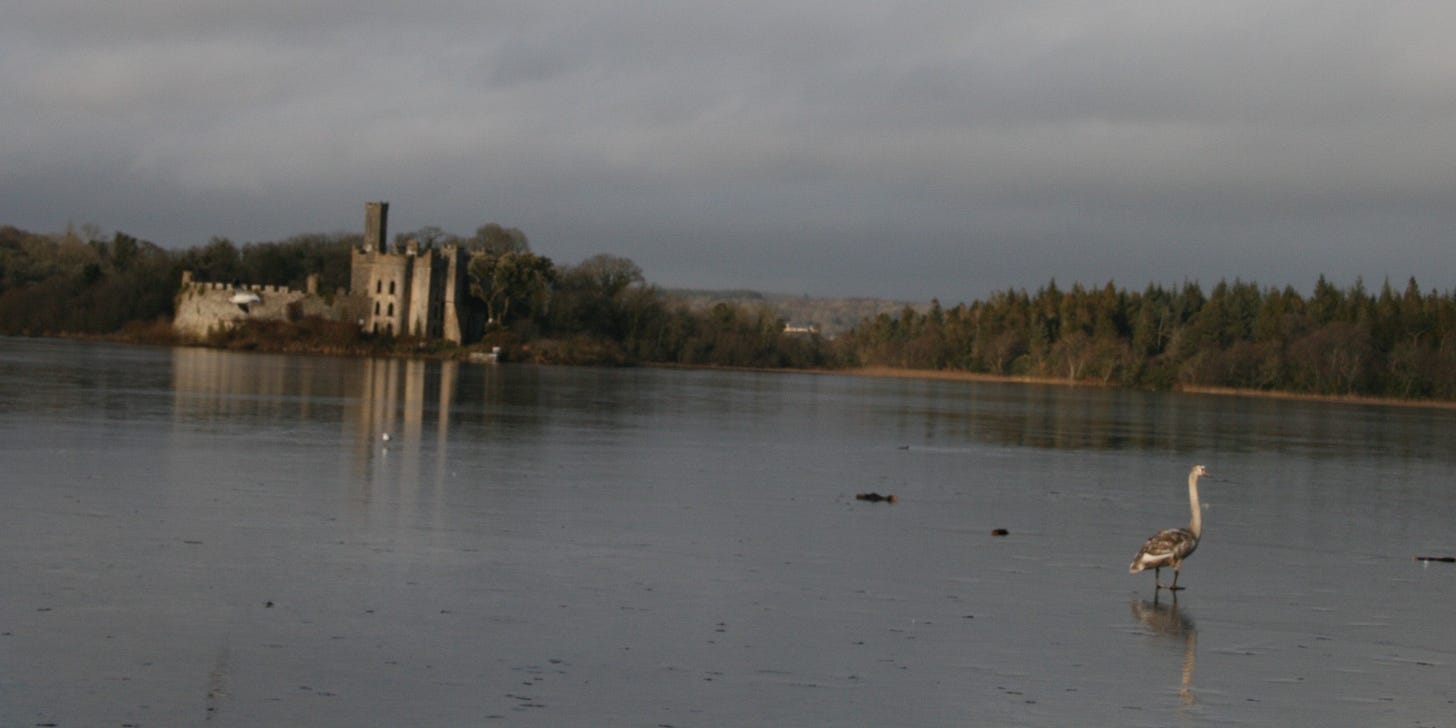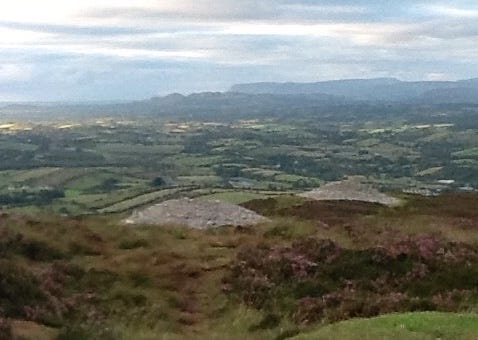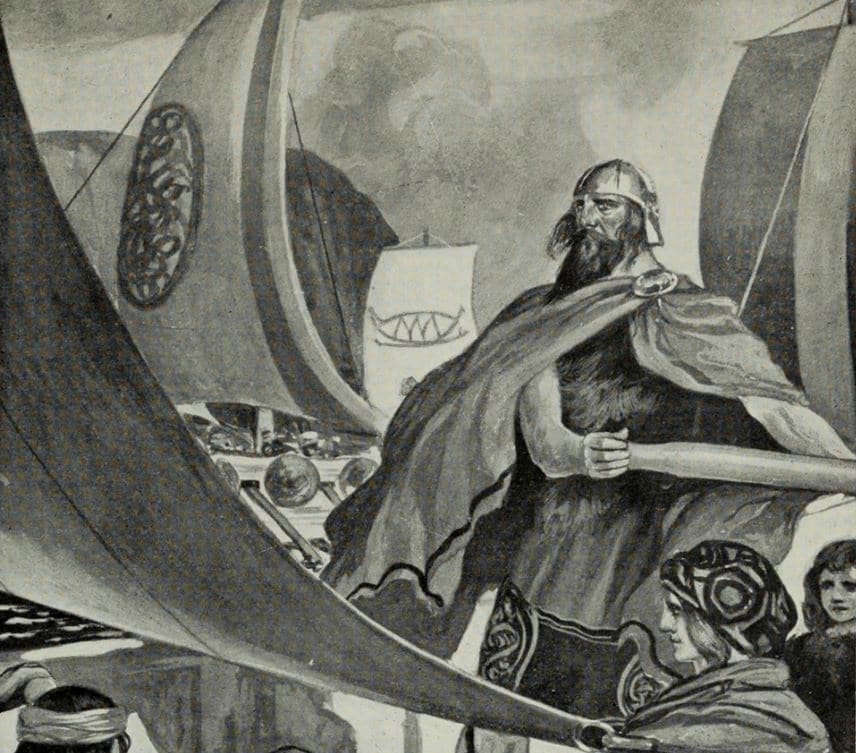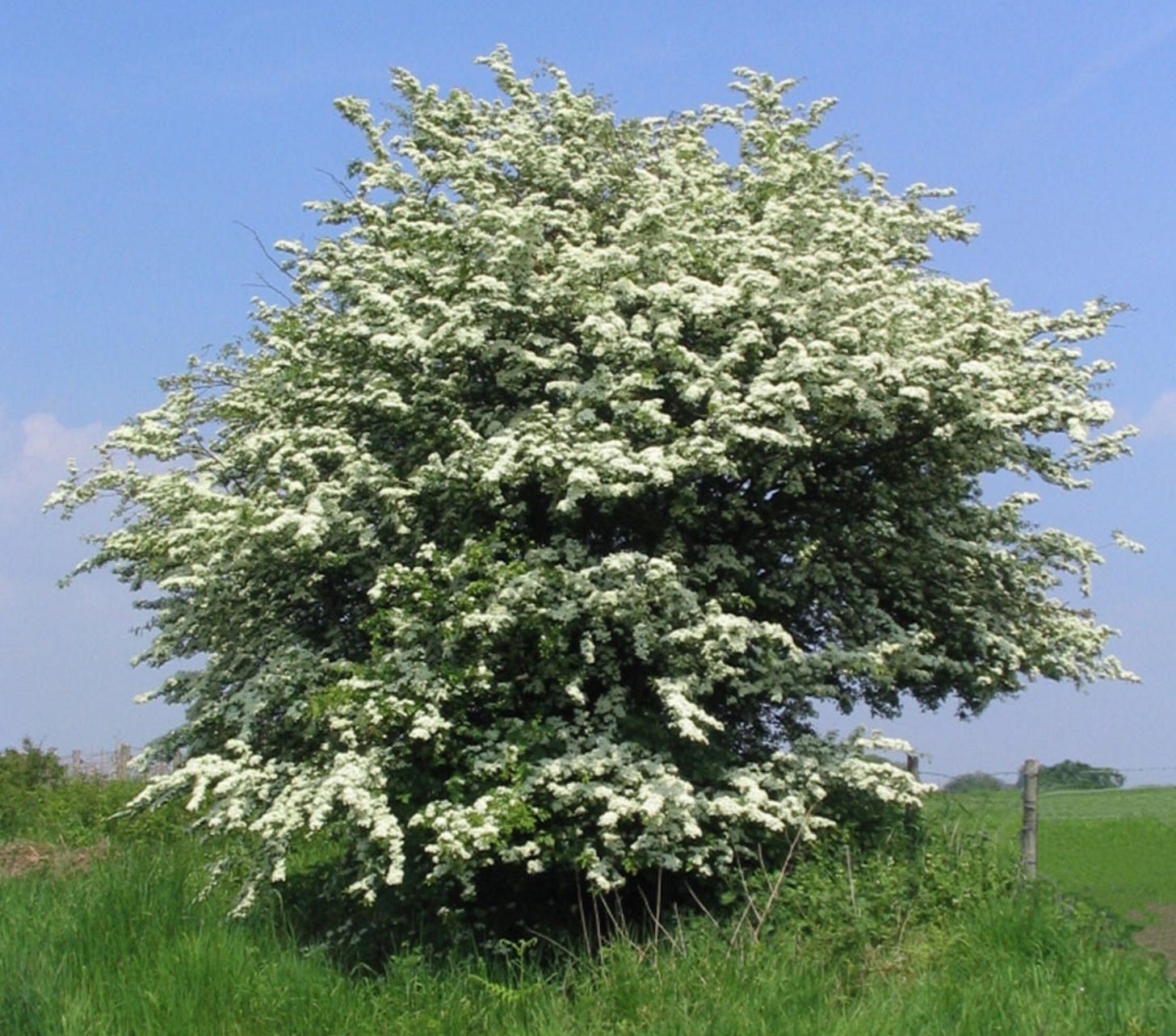Discovering The Sidhe through Mounds or Water
Through my ‘Discovering The Sidhe’ series last year and this year, I have probably wrecked the ‘Sidhe’ interpretation of most dedicated and devoted Irish folklorists.
The general and quite solid interpretation is that ‘Sidhe’ is the name of ‘mounds’ around Ireland that are either full geologically created hills or human created earthen mounds on hills, often called ‘fairy mounds. ‘Sidhe’ mounds are part of Irish geology and landscape with natural hills not far from me carrying names such as Sheebeg, Sheemore, Sheecor, Knocknashee.
These Sidhe mounds are told of as being the residency or realms of the ‘Aos Sí’, usually pronounced ‘is-shee’, or ‘ees-shee’, or even ‘ay-ees-shee’ translating out as ‘people of the mounds’, or even ‘people of the fairy mounds’.
But the word ‘fairy’ is not really of Gaelic origin. ‘Fairy’ word may have arrived with the Normans as a ‘faerie’ and older word ‘fae’ had ancient French origins that evolved from a Latin word ‘fata’.
The ‘fata’ word was used within the Roman Empire as describing ‘fate’, but somehow that word evolved into ‘fae’, or similar as describing ‘enchantment’. But the ‘fate’ word carried on through to the English language as ‘fate’, or destiny.
Though the ‘enchantment’ fae word eventually reached Ireland, it seems to have made a synthesis into the Gaelic ‘Aos Sidhe’ otherworld people. Through language and folklore this gave birth to a race we call ‘fairies’. Though I am sure that interpretation accelerated during the Celtic Romance years of the 19th century.
I believe it was W.B. Yeats who popularised a corruption of the ‘Sidhe’ mound identity by shortcutting the ‘Aos Sí’ entities , to just ‘Sidhe’. There was also a romancing of the geological or man made mounds through describing them as palaces, courts, and residences of otherworld or parallel world beings. Then the Sidhe word became used to describe the beings themselves.
Through my ‘Discovering The Sidhe’ I am guilty of a similar corruption really, so I will attempt to explain myself.
Hearing the word ‘Sidhe’ or ‘Si’ has always given me an instant vision of the oriental word we know of as ‘qi’. Qi, defines that life, that we may call the energy of life, has a circulating and never straight movement and that is the basis of much of Oriental and Chinese philosophy that is applied to culture, lifestyles, and medicine. I have often heard of acupuncture being a therapy craft for balancing our human body’s flow of ‘qi’. When that balance is improved, healing naturally happens.
I have also heard ‘qi’ pronounced as ‘key’, ‘chee’ and ‘shee’.
When I worked for a herb company, put together and run by a Chinese man, he described that the balancing of ‘qi’ in our body was achieved through how our body fluids flowed. But a deficiency of ‘qi’, vital energy’, can be experienced when there is imbalance or lack of food, shelter, sleep, and calm. Some therapists will actually say its our ‘breath’ that commands ‘qi’ balance rather than our body’s liquid flow.
One imagery that is potent to me is when I hear the ‘key’ sound from saying ‘qi’ I think of the tales of Lough Key in Co. Roscommon. ‘Cé’, for Key there pronounced the same as ‘qi’. The Lough’s name is said to have be from the name of guide, counsellor, or druid, of Nuada, king of the Tuatha De Danann, during the Second Battle Of Moytura.
After Nuada was beheaded in that battle, The priest ‘Cé’ is said to have ran towards Carn Corrslebe, that I assume was an ancient cairn built on what is now called the Curlew Mountains. On his way there he saw and started crossing a plain of beautiful flowers to get to the ‘carn’. But among those flowers, somehow ‘Cé’ died. When ‘Cé’ was buried there, among the flowers, water shot up from his grave and covered the entire plain of flowers. Today that huge body of water is called Lough Key.
Thinking of the oriental balancing flow of ‘qi’ as liquids, especially water, and the story of Cé, I also think of how all life flows with water. Without water bodies of life on earth would not exist. Even just air would not be enough, even though air and water both contain oxygen that seems to ignite life.
So to me, when I hear of ‘Sidhe’ or ‘Aos Sí’, just thinking of the structure of the mounds and the individualities living within those mounds is not enough. I always ask “where is the life flowing to make all of this happen?”
I am sometimes advised or told by folklore and traditional compliance people to “stick to the scripts”. These ‘scripts’ being assembled and archived mainly by medieval scribes, but I am not one for trusting those writings, or any writings for ‘facts’. To me they are all stories.
It is wonderful that the scribes did so much and tried so hard to archive, so that we now still have references to their works. But I think we must also imagine the conditions these scribes worked under. They were dominated by the chieftains and abbots that employed them, so I am sure their scribings had to lean towards the intentions of preserving heritage identities of ‘greatness’ that their leaders probably commanded. If their scribings did not achieve this, then there would have been no food, shelter, or medicine for the scribe and possibly the scribe’s family.
David Fitzgerald published a book, ‘Popular Tales Of Ireland’ in 1880, and referred to a word ‘sidh’ meaning ‘immortal’, and he compared this to other words such as ‘sídhbe’ meaning long life, and ‘síthbeo’ meaning lasting.
Many ‘Gaelic’ tales told of the Sidhe are sourced from literary archives that usually reference a tribe, or race, called the Tuatha Dé Danann, people of the Goddess Danu. Though the ‘Book Of Invasions’ mentions various tribes before that arrived, and then vanished, except the Firbolgs, but they complicate this story :-). Then the Tuatha Dé Danann arrived and eventually became regarded as the deities of an immortal race of ancestors of Irish people today.
After the Tuatha De Danann arriving on this island now called Ireland, we have the stories of 5 Sons Of Mil setting off to Erin shores in 30 ships, each carrying 30 men and 30 wives. Several of those ships are said to have sunk and 3 of the 5 Sons Of Mil landed on Ireland. Those sons are said to have fathered all of the descendants, all of the Gaelic race, of Ireland. Gaelic, in a very roundabout way, translates out as ‘people of the trees’, and an explanation of that will open my ‘Us And Trees’ series this year.
As the stories tell, somehow these Mil people overcame the Tuatha Dé Danann and formed a pact for them to live underground, in the Otherworld, in their own realm forever as immortals.
I could write on and on about that but local stories tell of these ‘Aos Sí’, the immortal deities of the Tuatha Dé Danann, living nearby in mounds. Also living nearby in trees as ‘Good Neighbours’ or the ‘Fair Folk’.
‘Aos Sí’, fair folk, are spoken of as being fierce guardians of their earthy abodes, that we now call ‘fairy hills’, ‘fairy mounds’, ‘fairy rings’, and their sacred trees, especially the Hawthorn, as well as Rowan, Ash, and all trees really.
But in folklore the Hawthorn dominates this role now.
Such trees close to our home are said to provide us protection from the ‘Aos Sí’, fair folk, especially Rowan. Other trees, such as Blackthorn and Elder, close to the home are said to tempt the ‘Aos Sí’, fair folk to jump into our homes and create havoc. Best known is perhaps the Hawthorn providing us protection from the fair folk outside. But bring any Hawthorn into the home, and that could bring in the fair folk to create the worst havoc and curse enchantments.
The ‘changeling’ stories of the ‘fair folk’ coming into our homes and swapping healthy babies with sick babies, especially baby boys, to bring healthy baby boys into their realm is perhaps the best known.
For some reason, the Sidhe entities in trees, especially those near our homes, are sometimes known as ‘Daoine Sí’, pronounced ‘deen’, ‘deeawn’, and I’ve heard ‘deeoon’. Sometimes I hear that entities of nobility within the Sidhe deity race are called ‘Daoine Sí’, but I think most of those tales are 19th century Celtic Romance story inventions.
Despite the scribings in Libor Gabála Érenn, and other ancient Medieval scribed books, I still cannot vision the entities of the Sidhe and the fairy folk as being actual living individuals. I think us humans ‘demand’ images and presence of individuals though. Part of that may be due to our demand for identities before we trust or believe in something. The other part is that in our upbringing there is branded education, taught through religion, that we live on earth as individuals, and pass on from this earth to another realm as individuals.
To close this edition I am diving right into my own personal beliefs.
I believe what we speak of as the Sidhe today is all about water. Without water there is no life and no living beings including plants and trees. Without water all land would be ‘land of the dead’, which is what Iberia was known as, and I wonder why?
Through water, I believe all memories of all living things live, hence why over time living beings are born to adapt to changing conditions due to DNAs adapting. In water I believe is our entire collection of what we call ‘ancestry’.
As water is ‘memory’ that we can clairvoyantly tap into, that would cause imagery within, and seemingly outside of us, that would seem incredibly real to the point our senses actually go beyond seeing into smelling, hearing, and even touching. I believe that is why we passionately believe that these entities are real and are of actual individuals. To me, this is all due to the use of memory from water, that we may call ‘psychic’.
Tapping into the ‘psychic’ I feel is essential ‘nourishment’ for all of us, not only for mapping our lives but being creative, motivated to live, and feeling quite complete in ourselves knowing that we belong and are part of it all. Some people describe that as ‘self love’ or ‘feeling secure’.
Then when our body is broken down, and done, or ‘life’ leaves us. we are dead. Our ‘life’ leaves us within the water of our body, that is 60% to 75% of our living selves anyway. Our body water rejoins all of the other water again, and its infinite library of ‘ancestral’ memories. People then recall us through their memories and psychic sense.
That completes my ‘Discovering The Sidhe’ series this year. I will follow up with a gazetteer edition for easier reference of this series so far. Then it’s onto my ‘Us And Trees’ series that was far too short last year.
Thank you for following and supporting Nature Folklore.
If you would like to join my 'Ogham Prompts' course? 20 optional modules a year, join in from any module any time as this is a cycle course, plus some meet-ups Please consider upgrading to monthly or very discounted annual subscription and get instant access to my 'Ogham Prompts' course modules. Subscribers will also receive enlarged versions of my free postings to include video clips and interviews where possible. I believe more value that a book, though I have books being put together too. All of my 20 Ogham Prompts are now linked up for easy reference in one place … gazetteer


